#Association of Ishtar
Text
Want some more insight where world building is concerned? Join authors Holly Rhiannon and Bonsart Bokel to learn more!
#Writing#writingcommunity#creativewriting#newauthor#writinghelp#writingtips#writingadvice#writingresources#writingtipsandtricks#editing#selfpublishing#Bonsartbokel#Association of Ishtar
0 notes
Text
Every few years I check if they ever added regular ol' Marik Ishtar to Duel Links & the answer always no which is really funny to me
A main DM antagonist in a series that really loves to pull on the DM nostalgia strings & this guy who was in the movie for like 2 minutes was added before him

#Scud nation rise up#I'm guessing its probably because the card he kinda associated with are kinda already covered via like 5 other duelist but still#yu gi oh#marik ishtar#duel links
13 notes
·
View notes
Text

So you can throw me to the wolves
Tomorrow I will come back, leader of the whole pack
I have been drawing at a snails pace lately, but I'm really proud of how this one turned out 🥰
#i thought about calling this kneel or beg lmao#the background was HEAVVILY inspired by millenniummmbop thief king bakura#marik ishtar#marik#malik ishtar#yugioh fan art#yugioh#amararala art#the association of Marik and Throne comes from Chloelouygo thank you for showing me BMTH really gotten into them this year 🙏
41 notes
·
View notes
Text
Oh, lord. The headache I woke up with.
I won't bore anyone with details, but I will say. The ramblings I wrote down in my notebooks were... less than academically sound.
#john j talks#though i will say. i was right in the sense that#people Do tend to forget#that aphrodite was also once associated with war#once a very long time ago#when she was still newly arrived as a version of ishtar
3 notes
·
View notes
Note
" try not to have too much fun without me. "
WAYS TO SAY I LOVE YOU: CRITICAL ROLE CAMPAIGN ONE EDITION // @eveniingstar
"You don't need to make that request, it's so much more fun than you're around."
Tamar's words are genuine; of course, they are. There's something about Ishtar that she finds interesting. Perhaps it's the more alien worldview of a goddess, but perhaps there's no real rhyme or reason for it. One can enjoy the company of another without dwelling on the reasons why.
When she thinks about it too much, Tamar can't help but wonder if Rin Tohsaka's face is some unfamiliar but vaguely familiar comfort or because they're bound by their experiences. But it's not that Ishtar is Ishtar, a breath of fresh air, the kind of person Tamar probably needed in her life years ago.

"I'd say the same for you, but I want you to enjoy yourself."
#eveniingstar#[thank you for the ask!]#[I feel like the fact Ishtar's in Rin's body confuses the fuck outta Tamar]#[who if my maths is correct is the same age as her with ties to the association asdfgh]
1 note
·
View note
Text
Ok so I saw Aphrodite’s new design for Hades 2 and I need to talk about it.
First, hhhhhhh women…
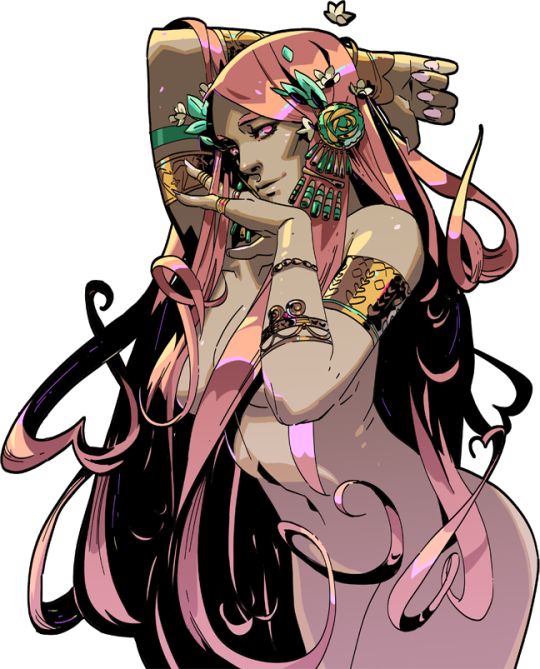
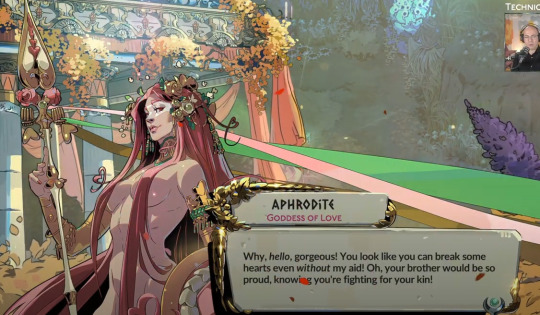
Second, I don’t know if this is intentional but I’m going to assume it is, I love how Supergiant has dug into less well known parts of Greek mythology. Zagreus and Melinoë, for instance, are attested to by a single source each that give next to no information other than their parentage. And they did it again with Aphrodite!
Like all Greek gods, Aphrodite was referred to by different epithets depending on what aspect of her was being referenced. One of her less famous epithets was Aphrodite Areia (“The Warlike Aphrodite”), which places her role as a goddess of war as well as love. Worship of Aphrodite Areia was mostly limited to Sparta, Taras, and Kythera.
Aphrodite was originally introduced to Greece as the Phoenician goddess Ashtarte, a goddess of war, love, fertility, lions, and Venus, who herself was borrowed from the Mesopotamian Ishtar/Inanna, a goddess of war, love, fertility, Venus, and rulership. She was spread to Greece by traders during the Greek Dark Ages, first coming to shore in Cyprus and Kythera, both of which are often cited as her birthplace.
Aphrodite Areia was probably more faithful to her original interpretation, but most of Greece ended up sanitizing the war associations out of her. The Iliad, written while that was happening, goes out of its way to portray her as incompetent in battle, she gets stabbed in the wrist by Diomedes and told by Zeus that she doesn’t belong on the battlefield. It’s conspicuous enough to sound like a pointed statement from the author. I do find it very funny that despite trying to remove her associations with war, the Epic Cycle also makes her directly responsible for starting the most biggest war in Greek mythohistory.
I love that her design is shedding light on this lesser known aspect of her, her pose even seems reminiscent of the surviving statues of Aphrodite Areia.
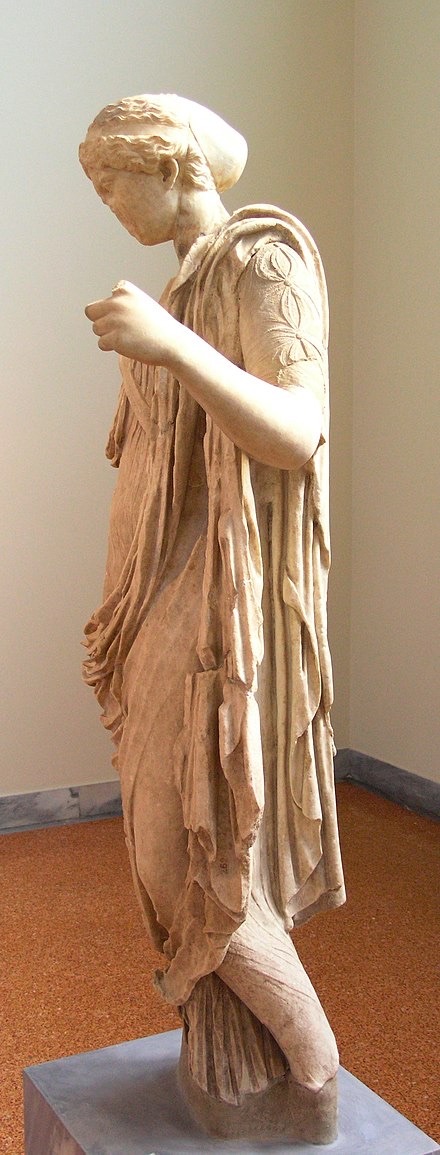
Another little detail is her new face paint, which is identical to Ares’ in Hades! Aphrodite Areia is associated with Ares even more than usual (Ares and Areia are cognate words, both from ‘are’ for war or ruin). Of course, Aphrodite is often depicted as Ares’ lover so this choice just works in general.

Anyways some real good character design here. Also the hair censoring is so good.
961 notes
·
View notes
Text
October 2023 witch guide
Full moon: October 28th
New moon: October 14th
Sabbats: Samhain
October Hunter's Moon
Known as: Blood moon, drying rice moon, falling leaf moon, freezing moon, migrating moon, moon of the changing seasons, shedding moon, ten colds moon, winterfelleth & windermanoth
Element: Air
Zodiac: Libra & Scorpio
Nature spirits: Frost faeries & Plant faeries
Deities: Apollo, Astarte, Belili, Cernunnos, Demeter, Hathor, Herne, Horned God, Ishtar, Kore, Lakshmi & Mercury
Animals: Elephant, jackal, ram, scorpion & stag
Birds: Crow, heron & robin
Trees: Acacia, apple, cypress & yew
Herbs/Plants: Angelica, apple blossom, burdock, catnip, pennyroyal, sweet Annie, thyme & Uva ursi
Flowers: Calendula, cosmos & marigold
Scents: Apple blossom, cherry & strawberry
Stones: Amethyst, beryl, obsidian, opal, tourmaline & turquoise
Colors: Black, dark blue, Dark greens & purples
Energy: Artistic works, balance, creativity, harmony, inner cleansing, justice, karma, legal matters, mental stimulation, partnerships, reincarnation & uncovering mysteries or secrets
It is believed that this name originates from the fact that it was a signal for hunters to prepare for the upcoming cold winter by going hunting. This is because animals were beginning to fatten up in preparation for the winter season. Moreover, since fields had recently been cleared out under the Harvest Moon, hunters could easily spot deer and other animals that had come out to search for remaining scraps. Additionally, foxes and wolves would also come out to prey on these animals.
The earliest use of the term “Hunter’s Moon,” cited in the Oxford English Dictionary, is from 1710. Some sources suggest that other names for the Hunter’s Moon are the Sanguine or Blood Moon, either associated with the blood from hunting or the color of the changing autumn leaves.
Samhain
Also known as: All Hallow's Eve, Ancestor Night, Feast of Apples, Feast of Sam-fuim, Feast of Souls, Feast of the Dead, Geimhreadh, Hallowmass, Martinmass, Old Hallowmas, Pagan New Year, Samana, Samhuinn, Samonios, Shadowfest & Third Harvest
Season: Fall
Symbols: Apples, bats, besom(brooms), black cats, cauldrons, ghosts, gourds, jack-o-lanterns, pumpkins, scarecrows & witches
Colors: Black, gold, orange, silver & white
Oils/incense: Basil, cloves, copal, frankincense, gum mastic, heather, heliotrope, mint, myrrh & nutmeg
Animals: Bat, boar, cat cattle & dogs
Stones: Amber, anatase, black calcite, black obsidian, black tourmaline, brass, carnelian, clear quartz diamond, garnet, gold, granite, hematite, iron, jet, marble, pearl, pyrite, ruby, sandstone, sardonyx, smokey quartz, steel & tektite
Foods: Apples, ale, beef, cider, corm, fruits, garlic, gourds, grains, hazelnuts, herbal teas, mushroom, nettle, nuts, pears, pomegranates, pork, poultry, pumpkin pie, sunflower seeds, thistle, turnips & wine (mulled)
Herbs/plants: Acorn, Allspice, catnip, corn, dittany of Crete, hazel, mandrake, mugwort, mullien, oak leaves, pine, rosemary, sage, straw, tarragon, thistle, wormwood & yellow cedar
Flowers: Calendula, chrysanthemum, deadly nightshade, rue & fumitory
Goddesses: Al-lat, Baba Yaga, Badb, Banba, Bast, Bebhionn, Bronach, Brunhilde, Cailleach, Carlin, Cassandra, Cerridwen, Copper Woman, Crobh Dearg, Devanyani, Dolya, Edda, Elli, Eris, Erishkigal, Fortuna, Frau Holde, Hecate, Hel, Ishtar, Kali, Macha Mania, Morrigan, Nemesis, Nephthys, Nicneven & Rhiannon
Gods: Arawan, Baron Samede, Belenus, Coyote, Cronus, Dagda, Dis, Hades, Loki, Nefertum, Odin, Osiris, Pluto, Woden & Xocatl
Issues Intentions & Powers: Crossroads, darkness, death, divination, honoring ancestors, introspection, the otherworld/underworld, release, visions & wisdom (of the crone)
Spellwork: Divination, fire magick, night magick, shape-shifting, spirit calling & water magick
Related festivals:
• Day of the Dead- (Spanish: Día de Muertos or Día de los Muertos) is a holiday traditionally celebrated on November 1st and 2nd, though other days, such as October 31 or November 6, may be included depending on the locality. It is widely observed in Mexico, where it largely developed & is also observed in other places, especially by people of Mexican heritage. Although related to the simultaneous Christian remembrances for Hallowtide, it has a much less solemn tone and is portrayed as a holiday of joyful celebration rather than mourning. The multi-day holiday involves family and friends gathering to pay respects and to remember friends and family members who have died. These celebrations can take a humorous tone, as celebrants remember funny events and anecdotes about the departed.
• All Saints Day- is a Christian solemnity celebrated in honor of all the saints & martyrs of the Church, whether they are known or unknown
Activities:
• Dedicate an altar to loved ones who have passed
• Boil a simmer pot to cleanse your space
• Have a silent dinner
• Light a candle for your loved ones & yourself
• Decorate your house and/or altar
• Release negative energy & cleanse your with a ritual bath
• Pull tarot cards to see what may be in store for you ahead
• Cleanse, clean & de-clutter your space
• Leave offerings to the Fae
• Journal & reflect on your accomplishments, challenges & everything you did this year
•Go on a nature walk
• Learn a new form of divination
• Have a bonfire with your friends and/or family
• Carve pumpkins
• Express yourself creatively through art, music, ect
• Visit a cemetery & help clean off areas that need it or to visit a family member/ ancestor & leave an offering
• Hold a seance
• Bake spooky treats & bread as offerings
• Refresh your protection magicks, sigils & rituals
Samhain is a Gaelic festival on 1 November marking the end of the harvest season and beginning of winter or "darker half" of the year. Celebrations begin on the evening of 31 October, since the Celtic day began and ended at sunset.
This fire festival is celebrated on October 31st & is considered the Pagan New Year. It is the first Sabbat on the Wheel of the Year, a cross-quarter festival & the third (final) harvest festival of the mundane year. This is the time when the veil between the worlds of the living & those who have passed is the thinnest, which allows greater communication between the two
Some believe this is the time of the Goddess's mourning of the death of the God until his rebirth at Yule. The Goddess's sadness can be seen in the shortening, darkening days & the arrival of cold weather
Sources:
Farmersalmanac .com
Llewellyn's 2023 magical almanac: practical magic for everyday living
Wikipedia
Llewellyn's Complete Book of Correspondences by Sandra Kines
A Witch's Book of Correspondences by Viktorija Briggs
#witchcraft#wheel of the year#sabbat#samhain#fall#hunter's moon#witchblr#wiccablr#paganblr#pagan#wicca#grimoire#spellbook#book of shadows#witches of tumblr#witch tumblr#witch community#moon magic#witch tips#witch guide#beginner witch#traditional witchcraft#all witches#correspondence#witchcore#GreenWitchcrafts#baby witch#beginner witch tips#baby witch tips#witchyvibes
847 notes
·
View notes
Text
Howdy folks. I’ve said I’d make a rant about this for a while. It’s time.
Let’s start with the basics. Mesopomatia is the earliest known human civilization. Humans existed before them, but this was the first “city”. They also made the first writing. This rant also kinda covers Sumerian tuff, because the two groups had a bit of a merging.
You know what transgenderism is. You’re on tumblr dot com. Chances are you are a transgenderist yourself
Transphobes often say that transgenderism is a “new concept” and that “nobody was trans 20 years ago”. For the record, you don’t have to go as far back as Mesopotamia. There’s Greece, Egypt, Hawaii, and tons of others I fail to remember. But yeah, we date back to The First City.
The First People believed in many gods, one of which you’ve likely heard of. Today’s subject: Inanna/Ishtar, The Queen of Heaven (I’ll be calling her Inanna, as it’s her original name). She was the goddess of Sex, War, and Justice. The most notable things she was believed to do were changing people’s genders and being an absolute queen. Like fr she slayed-
Anyways, the “transgender power” as I’m gonna call it because it's funny, is well documented in poetry fragments, with the direct quote “To turn a man into a woman and a woman into a man are yours, Inanna.” This was written by Enheduanna, Inanna’s High Priestess from Ur (Ur is a city).
Speaking of Inanna’s Priests and Priestesses, they were actually known for their androgyny. Poems and Dedications to Inanna often included them, with the direct depiction of the goddess transfer-ify-ing them. It’s unknown if these and the Gala are the same priests, so I’ll add a little space and talk about them for a bit.
The Gala were priestesses for Inanna created by the god Enki (who is really fuckign cool for non-trans reasons (might talk about him sometime)) to sing for her. Mourning Rites previously sung by women got taken over by the Gala, and as men joined, they adopted ALL societal roles and expectations of women, switching to female names and singing in the Sumerian eme-sal dialect, which was reserved for women trying to render the speech of female gods. The Gala looked after the sick and poor, and were highly respected by the rest of the Mesopotamian peoples.
Time to talk about the Pilipili! They were a group of cultic performers who worshiped Inanna, with the name coming from a person named Pilipili. They were raised as a woman (according to Mesopotamia’s gender roles), and were blessed by Inanna and given the name Pilipili. Inanna gave them a spear, an item associated very heavily with masculinity “as if she were a man” and they are only referred to as “The Transformed Pilipili” from that point on. “Spear'' is also thought to have phallic meaning here, which is even more directly saying that Inanna trans’ed Pilipili’s gender.
How about we move beyond the cult on Inanna now? A statue (or technically statuette but honestly whatever) found in the city of Mari depicts a singing woman. But wait! The name of the depicted person is “Ur-Nanshe”, a masculine name! This might mean nothing, but honestly, you’d assume transgenderism too if you met a woman named Steven. The statue has a soft face with traces of makeup, and it’s got tiddies!
A statue in the British museum (which for the record should not be in there. give it back) has a label translated as “Hermaphrodite of Inanna”. Hermaphrodite has a different meaning now, which a different translator, Cheryl Morgan, recognized, stating that “person-man-woman” would be more accurate. We don’t know specifics about their gender, but clearly this was a person outside of the gender binary who was not only significant enough to have a statue of them made, but also assumedly well-liked!
So, to summarize, Ancient Mesopotamia viewed genderqueer individuals as:
often blessed by the Queen of Heaven
transgender-ify-ed by said Queen of Heaven
well respected enough to be priests
said cult of trans priests was also said to be made by another god in devotion to Inanna
significant and well-liked enough to have statues of them
sounds like we should take some notes from our ancestors, huh?
#transgender#nonbinary#genderqueer#transphobes can suck it!!!!!!#mesopotamia#history#queer history#lgbt history#trans history#reblogs appreciated
705 notes
·
View notes
Text
One of the things I hear a lot from Gentile witches and neo-pagans who want to work with Lilith or claim to work with Lilith, is that she is actually a Mesopotamian goddess, usually either Ishtar/Inanna or Erishkigal, and that it was the Jews, with their horrible patriarchy juice, who slandered her and cast her down, and so the Jews do not deserve to say what happens to her and it isn't antisemitism to work with her, or to completely ignore what the Jews say about what she is in a Jewish context.
Lilith is not Ishtar or Erishkigal. However, there is a Mesopotamian figure that is pretty stinking analogous to Lilith, and is probably her folkloric ancestor, by which I mean the idea of Lilith probably comes from this Mesopotamian figure. In fact, Lilith almost certainly is either a Jewish version of this figure, or, they are both descended from the same Near Eastern and Mediterranean basin folkloric figure. That figure is Lamashtu.
Lamashtu is, much like Lilith, the supernatural embodiment of maternal and infant mortality, a figure of power and terror, who functions as a way to embody and cope with the profound dangers that are pregnancy, childbirth, and infancy without effective medical care. the Mesopotamians never worshiped Lamashtu, but they did seek to appease her, including making symbolic gifts to her, to keep her from visiting them, and killing them or their children.
An interesting side note is that there is also a Mesopotamian figure who specifically opposes Lamashtu and functions as the protector of pregnant women and infants, and that figure is Pazuzu, a wind spirit, who ruled over other wind spirits, including ones called the Iilu in the Akkadian language. Akkadian is a Semitic language, related to Hebrew, and this word is probably a cognate of Lilith, but the Iilu probably have no relationship to the figure of Lilith except her name. You might know Pazuzu as the demon featured in the movie, The Exorcist, and ironic fate for a mythological protector of women and children.
Anyway, if you'll remember, I implied above that the Lamashtu/Lilith figure, was present in various guises throughout the Mediterranean basin and the Near East, so there are of course figures analogous to both of them throughout the region, such as Lamia of Greece, and the Strix of Rome.
So if you really really want to work with a figure who functions as the supernatural embodiment of maternal and infant mortality, Lamashtu, Lamia, or the strix would all be excellent options that don't come from an extant closed religious practice. All the baby killing, none of the antisemitism and cultural appropriation.
While all three figures are almost certainly descended from the same folkloric root, they're all subtly different, because as stories and characters travel, they change. as such, they all have particular good points about them as figures of veneration.
Lanashtu is the OG bad bitch, who commanded fear, respect, and offerings, like a mythological mafiosa, collecting protection money.
Lamia has attached to her the story that she was one of Zeus's dubiously willing lovers, who was screwed over first by Zeus, the embodiment of patriarchical rule, then by a jealous Hera, the embodiment of patriarchal marriage, so if what attracted you to Lilith was the story from the Alphabet of Ben Sira, about a victim of the patriarchy getting her own back through violent vengeance, Lamia might be the girl for you. With her however, the emphasis is less on her murder of children, then on her seducing and eating men, though she does also get strongly associated with killing children, especially boys.
And the strix is particularly interesting, because the word comes down to us in the modern Italian word for witch, striga. Indeed, one of the theories as to where the witch figure came from in Early Medieval, and then Early Modern Christianity, was as the strix demon made human. This might explain the close association between Early Modern Witchcraft and infant mortality, including Italian stories of witches causing infants to die seemingly natural deaths, so that they could dig them up and eat them after their funerals, something that ties these human supposed witches very closely to demonic folkloric antecedents. If you are looking for a figure of unfairly maligned female power, the strix and her close association with later human witches, might be the one for you.
All three of these figures, much like Lilith herself, are reflections, both of the power women wielded even within patriarchal societies, over the process of pregnancy, birth, and childrearing, and also the powers of death and loss that everyone was subject to. There is something powerful, transgressive, and even healthy in acknowledging the fears and dangers presented by this death and loss,and for some people, that might take the form in venerating the underlying powers. If this is something that would be spiritually meaning for you, and you wish to work with such a figure, and you are not Jewish, please respect the fact that Lilith is part of a closed religious practice, and remember that Lilith has sisters, in other parts of the Mediterranean basin and the Near East, who are not from extant closed cultures, and who might serve your needs better anyway.
667 notes
·
View notes
Text
WHO IS CROWLEY AFTER THE FALL?
so there is a LOT of debate over who Crowley was before The Fall. I have seen a lot of headcanons going around the place saying he was Raphael or Kokabiel or Baraqiel.
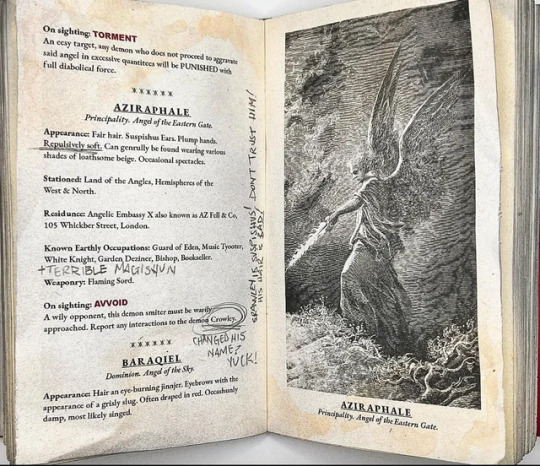
I mean this is the Exhibit A for saying that Crowley is Baraqiel. I think NOT.
Because this is a handbook written by demons for demons. The title is literally (if my memory serves me right) a guide to angelic beings that walk the earth. SO Crowley is not That..
Other than the red hair thing, no other physical characteristic matches. This Baraqiel guy sounds like an absolute gremlin. grisly slug, occasionally damp. NOT CROWLEY. I mean she's the most dashing thing around.
NO. #3 It says CROWLEY one line above the name Baraqiel. If Crowley is Baraqiel then why would his demon name appear right under that?????
And I think somewhere Neil Gaiman refuted this theory (I'm not really sure but I think so plz don't come at me with pitchforks if I got it wrong). So.......
But this is all beside the point. What I'm trying to say is that too much has been said about who Crowley was before he fell. There is very little, if not none, that has been said about who he was After.
Some say that he's an insignificant demon or some loser guy in Hell or whatever the equivalent of an angel principality deputy on Earth is.
I BEG TO DIFFER.
He is Important. Just look at the kind of assignments he's given. Original Sin, Major Historical Temptations and Evil Acts, Delivering the Antichrist and bringing about Armageddidn't.
But who is he exactly??????????
So canonically we're never told what Crowley's rank in Hell is. But there are more that enough hints for us to figure that out for ourselves.
But where does one place him when the hierarchy is so complex and varying across different historical and theological sources.
Such as here:
I have been thinking about this and I have two current theories
Crowley is Astaroth
Crowley is The Leviathan
I'll discuss only one in this post. I'll save the other for the next post.
Now book!Omens clearly tells us that Crowley or Crawley is not his real demonic name. For those who haven't read the book this happens when Hastur Lavista and Ligur come to hand over the antichrist to Crowley in the churchyard and as he's about to sign his name as "Crowley" they tell him to sign his real demonic name.
Are you with me?!!!!!
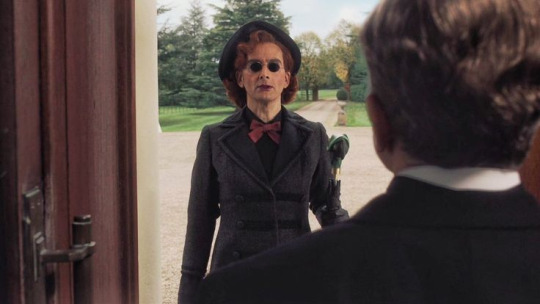
NANNY ASHTORETH!
Why did she use this particular name for her nanny disguise. What if...... what if this IS her real demon name.
A lot of my real life friends are annoyed beyond measure by my constant ranting about etymologies, origin and construction of discourse and epistemology, especially when it comes to presenting my thesis over how all Abrahamic religions and their symbology and iconography is, how do I put it, inspired from pagan religions that they expunged. I mean the concept of angles, the man shaped being with wings that is actually just a ball of fire or eyes or hale discs or sth is a pagan Persian concept.
Back to the matter at hand.
Ashtoreth, Astaroth, Astarte, Ishtar, are all the same name in different dialects and languages. All of these refer to a certain Babylonian goddess. When the People of God probably cleansed off all the infidels they decided to literally demonize their god and name a demon after her. In Milton's Paradise Lost Astaroth is one of the three princes or Grand Dukes of Hell alongside Beelz and Lucifer. If this theory might be true Crowley is a Prince/Grand Duke of Hell.
Now this gets even more interesting. Ashtoreth, Astarte, whatever you may, is a goddess of fertility and is associated with childcare. I mean at this point I just stopped to marvel at the attention to detail that Mr. Gaiman's work hold, the smallest hidden meanings in the storytelling.
Another thing. The Babylonians built these temples called ziggurats to worship Astarte and they looked something like this
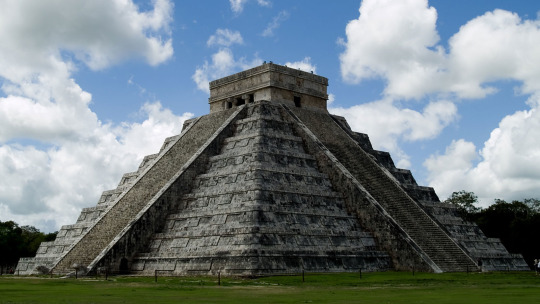
and this

they were also known as sky temples.
Because Astaroth was first and foremost the goddess of stars and the Babylonians were stargazers and the temples were constructed as a stairway to heaven to take them closer to the stars and functioned as an observatory at times.
I'm just imagining Crowley turning up in ancient Babylon and with her other-worldly looks, knowledge of the stars and compassion for children they just..... started to worship her.
Before the Christians came and declared them pagans and the rest is history.
Continued in next post for the second theory......
#good omens#crowley#nanny ashtoreth#nanny crowley#neil gaiman#ineffable husbands#good omens season 2#good omens meta#good omens brainrot#paradise lost#john milton#christianity#Babylon#history#religious iconology#meena rants#witers on tumblr#azicrow#aziraphale x crowley#go s2#go season 2#give me season 3 or give me death#bible fanfiction#leviathan#demons#angels#Astarte#Ashtoreth#Ishtar#etymology
197 notes
·
View notes
Text
Bharani : the birth of Venus.
Part 1

Let's talk about ancient godesses of love and Bharani nakshatra.
I will base my research on the legend of the dead and resurrected god present in many religious myths coming from the middle east (ps : i'm sorry in advance for the grammar, syntax or spelling mistakes that you may find in this post, english is not my first language)
Bharani, situated in the heart of the rashi of aries is governed by Shukr: Venus but also by Yami and Yama in vedic mythology who are twins and gods respectfully of life and death.

Yama, the main deity of Bharani is said to be one of "8 celestial gatekeepers, who guards eight directional doorways or exits through which souls travel from an earthly plane to other planes of existence" making him the lord of Dharma since at one's death, he decides basing on his actions in what plane should one reincarnate.

Since Yama is responsible for directing the flow of life on Earth the association between bharani and the yoni becomes evident: the female reproducting system serves as a portal for souls to take on a physical form. So bharani as Claire Nakti perfectly described it relates to the feminine ability to receive, hold, nurture and ultimately transform through the womb.
Because Bharani aligns itself with all the feminine qualities by excellence it makes sense as to why Venus is it's ruler.
Venus is the roman name for the goddess Aphrodite: in greek mythology. She is said to be the goddess of love and beauty at large but also the goddess of war and sexuality. First because the ancient greeks saw the duality that links love to war and how they seem to come together through sex.
Also, Aphrodite is said to be born from the sperm of Ouranos when his testicules got cut by his son Saturn as he was always feconding Gaia, the Earth and causing her distress: he was acting cruel regarding their children. The sperm of Ouranus got mixed up with the foam of the Ocean creating Aphrodite which means "risen from the foam". So it was interesting to see that as Shukr also means sperm in sanskrit and it shows the origin of Venus as a fertility goddess too.

This conception of Aphrodite directly links her to ancient goddesses of love such as Ishtar or Inana in Mesopotamian/summerian mythology or Isis in egyptian mythology. Most of the time, these goddesses are the female counterpart of a god that was once mortal, got cursed, died and then came back to life for them to form an immortal couple.
In the case of Ishtar, her consort is Dumuzi or Tammuz and Osiris is the consort of Isis.
In Mesopotamian mythology :
Ishtar or Inana in sumerian is the goddess of love and sexuality, beauty, fertility as well as war because of her status as a " bloody goddess" mostly refering to her character in plenty of myths.
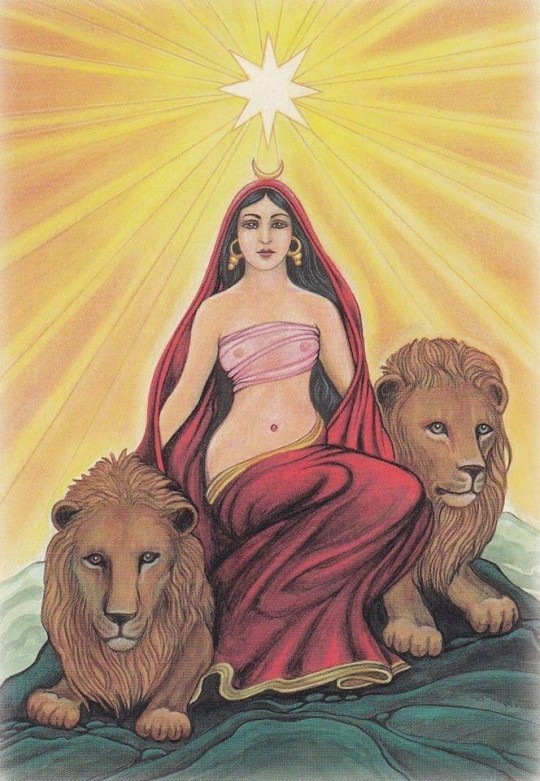
For example: in one story, she became infatuated with the king Gilgamesh, but the latter knowing her fierce reputation, refused her advances. As a result she got furious and unleashed the celestial Bull on Earth which resulted in 7 years of plagues. This celestial bull was later defeated by Gilgamesh and Endiku, and its corpse was throwed in front of Inana. Blinded by rage, she decided that as a punition Enkidu must die and sad at the death of his bestfriend Gilgamesh began his journey to find a cure to Death.
Bharani is a fierce or Ugra nakshatra meaning that its nature is agressive, bold and assertive in pursuing their goals. They are ruthless in the process of accompling what they desire the most and are inclined to extreme mood swings that can result in them to be "blinded" by their extreme emotions perfectly expressing the passionate character of Venus and her other equivalents in differents pantheons of antiquity.
Inana/ Ishtar's story with Dumuzi/Tammur begins as she was convinced to chose him by her brother Utu. Then she got married with the shepphard Dumuzi instead of whom she prefered in first the farmer: Enkinmdou. During the courtship, Inana prefered the fine textile of the farmer and his beer rather than the thick wool and milk of Dumuzi. The preference for the shepphard illustrates that at the time the Mesopotamian civilisation was known for their proliferent agriculture with the egyptians in the region, so this myth encapsulate the opposition between nomads and sendatary people at this specifific time period.

By the way, another symbol of Bharani is the cave and traditionnaly, the cave was used as a storage room for food. Also Bharani's purpose is Artha so these individuals are motivated to accumalate resources and provide safety and security, so Bharani can be linked to the exploitation of natural ressources like the soil illustrating the preference of Ishtar for the farmer. This is reinforced also by its Earth element.
So coming back to the myth, in a mesopotamian text called Inana's Descent to the Underworld, the goddess goes to Kur (hell) with the intent of conquering it, and her sister Ereshkigal who rules the Underworld, kills her. She learns that she can escape if she finds a sacrifice to replace her, in her search, she encounters servants who were mourning her death however she finds Dumuzi relaxing on a throne being entertained by enslaved girls. Enraged by his disloyalty she selects him as a sacrifice and he is dragged to the Underworld by demons.
He is eventually resurrected by Inana and they become an "immortal couple" as he may only come back to life for half of the year, being replaced by his son (?) who is also his reincarnation for the other half of the same years, so describing the cycle of regeneration of life.
Other mythologycal stories of goddesses in the near east describe a similar patterns:
The goddess Asherah is described as being the mother and the lover of her son Adonis.
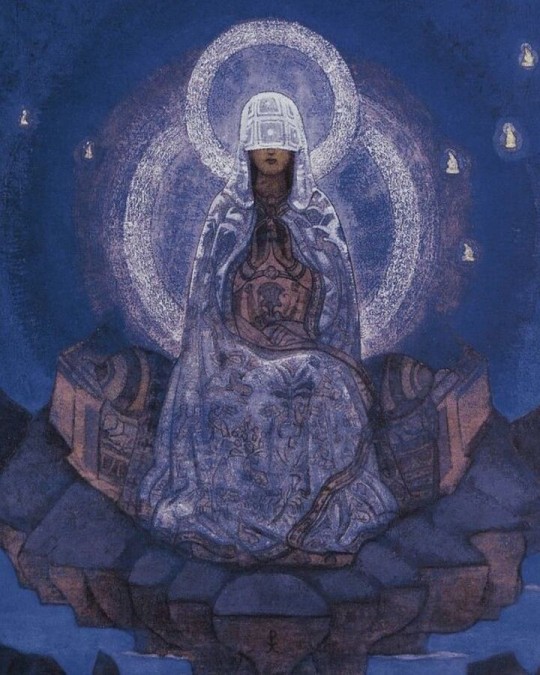
The goddess Cybele in the phrygian pantheon takes the form of an old woman as she described as the mother of everything and of all. And at the same time she is the consort of Attis who his her own son (wtf ?)
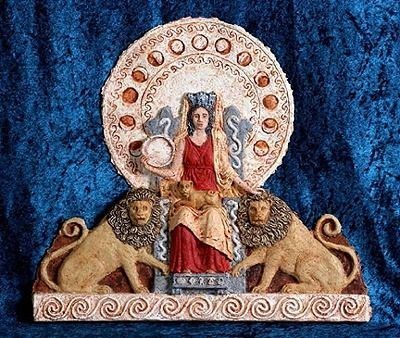
Also, Yama and Yami are implicated in a incestuous entanglement where his sister Yama wanted to lay with him however he refused establishing himself as a god with an infaillible moral campus.
All of these representations illustrate the relation between the masculine and the feminine, life and regenration which are all topics related to Bharani nakshatra. Women by their capacity to give life are seen as the source of life and therefore are eternal as they are able to regenarate themselves through daughters which are identical to them whereas man who is unable to reproduce by himself, is therefore mortal feels the need to associate with her to resurrect through a son who is identical to him. Bharani exiting as the embodiment of the link between "the father and the offspring" which is the feminine vessel.
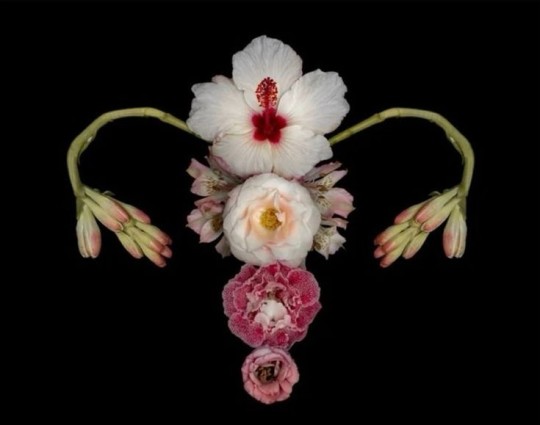

So this is certainly part 1, I think that these ancient myths are where Claire Nakti found her inspiration for her series on Bharani.
#vedic astrology#cinema#coquette#astrology#vintage movies#aesthetic#coquette dollete#fashion#vintage#movies#greek mythology#roman mythology#ancient egypt#bharani#chitra nakshatra#purva bhadrapada#purva phalguni#cowboy carter#venus#adonis
106 notes
·
View notes
Text
Decoding Venus: A Journey Through the Nakshatras
Cancer rashi is considered the most feminine yet all the naks in Cancer rashi are ruled by masculine planets except Ashlesha ruled by Mercury which is a "eunuch" planet.
Similarly, Venus is the most feminine planet but Venusian nakshatras embody true masculinity.
Sexual polarity is imp because men are drawn to women who may outwardly seem feminine and charming but who embody strength and are emotionally masculine. The same way, women are drawn to men who seem outwardly masculine but who are in tune with femininity inwardly; this is what manifests as gentleness, kindness, appreciation for the fine things etc
The opposite of Cancer/4h is Capricorn/10h, 3 nakshatras fall into Capricorn rashi, Uttarshada, Shravana & Dhanishta. But I'll explain their masculinity later.
Now here are some things to consider,
*all Venusian naks are Ugra nakshatras (known for being fierce and cruel)
*all Venusian naks are Manushya gana
*all Venusian naks belong to a fire sign rashi
*all Venusian naks are assigned the cosmic purpose of 'preservation' (in Hinduism, the 3 cosmic functions, creation/preservation/destruction are personified as the Trimurti and different naks are assigned different functions)
The first Venus nak is Bharani and it is the second nak overall. It is important to understand that the Venusian journey begins in Bharani.
Bharani's deity is Lord Yama, the God of Death. He delivers justice and embodies Kala or time. Bharani is symbolised by the Yoni (which means "vulva" in sanskrit) and the word Bharani itself means "to bear".
Birth and death may seem like polar opposites but there is an element of each in the other. To be born is to experience the death of passivity. To die is to experience the birth of the spirit in another form. Lord Yama is associated with divine punishment and dharma but it would be more accurate to say that Lord Yama metes out the treatment that is the result of our own actions. He rules over time, hence what we do in the present is what we will taste in the future as its consequences.
"Time takes the ugliness and horror out of death and turns it into beauty"- Dodie Smith (Bharani Sun)
In French, orgasm is referred to as "La petite mort" which translates to "little death" and it connotes the "brief loss or weakening of the consciousness". Sex and death have had close associations in many cultures.
Hanya Yanagihara's novel 'A Little Life' has the following book cover:

its a photograph by Peter Hujar and is called 'Orgasmic Man'. The author insisted on using this image for the novel's cover because of how its difficult to tell whether the man is in pain or pleasure. This ambiguity is a major theme in the book as well, that deals heavily with sex, trauma, abuse, addiction etc
Hanya Yanagihara has Bharani Moon with Purvaphalguni Mercury & Saturn
The book, you could say explores the dark side of Venus in some capacity. one reviewer described it as "There may never have been a cover that better captures the emotional heart of a story — that is to say the agony and the ecstasy of desire."
"It poses this question: How does one navigate desire when all pleasure to be discovered in the sexual act has been forever stripped away and turned into the stuff of nightmares, and yet the deep longing for love remains?" the conflict between lust and love is a theme that's explored in the works of many Venusian natives.

Ishtar is a Mesopotamian Goddess of love, fertility and war. Like many ancient deities, she was a dualistic deity, associated with life and death, making love and war as well as thunderstorms and food preservation. Ishtar was closely associated with Venus.
Ishtar, though responsible for all life is never considered a Mother goddess. She bore arms as the Goddess of War. She is a paradoxical Goddess figure with many contradictions; sex and violence, fecundity and death, beauty and terror, centrality and marginality, order and chaos. She occupies a liminal space and her influence spans every area of society, she governs all of civilization (think: the preservation aspect of all Venus nakshatras). She was even worshipped as the Goddess of transition between life and death due to her ability to come back from the underworld after she died.
She was widely worshipped in Mesopotamian society as an administrator of justice (see the parallels between Lord Yama and Goddess Ishtar?)
All of this gives us an idea about the highly complex nature of Venus. it amuses me when people think that Venus is some soft uwu nakshatra with bright colored aesthetics and cute lighting when the actual Venusian themes are of violence and war💀💀💀Venusian naks are hardcore af, let me just say that.
“Love is a smoke made with the fume of sighs;
Being purg'd, a fire sparkling in lovers' eyes;
Being vex'd, a sea nourish'd with lovers' tears;
What is it else? A madness most discreet,
A choking gall, and a preserving sweet.”
― William Shakespeare (Bharani Sun)
Bharani is closely associated with birth and procreation, however its cosmic function is "preservation" and not creation. This is because with other naks assigned the cosmic function of creation (ex: Ashwini & Punarvasu) creation must manifest from nothing. It manifests itself on its own; you are the creator and the creation. It is a spiritual and metaphysical concept, so to speak.
But Bharani is not associated with that sort of cosmic creation where the universe manifests itself from nothing, instead its connected to the most primitive and primal of human acts; copulation and procreation. Its directly associated with sex and reproduction. And this is not something that can happen on its own. by nature, procreation necessitates the union of man and woman. its not a symbolic act or a metaphor, it requires two people to get down and dirty. Creation of this sort is necessary to "maintain" or "preserve" our species; it does not arise out of nothing; certain prerequisite conditions have to be met in order for it to take place. this is why Bharani's purpose is "preservation".
from the minute that one is born, we are all on a journey towards death. Lord Yama embodies time because the actions we perform in the present can only be revealed in their true nature with time, i.e, whatever we sow, we reap but this is something that takes time. everything in life can be said to come down to timing. be it lessons learnt or success achieved.
its important to keep in mind that Bharani's aim is Artha
There are 4 aims, namely and each nakshatra has a specific aim assigned to it.
Dharma: doing what you are supposed to do. Fulfilling your soul in daily activities
Artha: generating income and wealth so you can provide shelter and food for your body.
Kama: going after your desires.
Moksha: liberating your soul.
Venus itself is a planet associated with wealth, luxury, abundance, beauty etc
The first Venusian nakshatra is associated with the material aspect of Venus which is creating income and thereby attaining security. If we look at Maslow's hierarchy of needs and correspond it to the 4 aims, we can say that Artha is at the foundational base and Moksha is at the very top with Kama & Dharma located in between the two.
It is very telling that while Venusian nakshatras are split among Artha, Kama & Moksha aims, there is no nakshatra assigned the aim of Dharma, which is doing one's duty. With Venus there is no duty, no obligation, no decree; whatever one does we do out of love, this is the essence of Venus energy.
Therefore Bharani concerns itself with the most basic of needs, which is creating security for itself. It occupies the sign of Aries, ruled by Mars and we can say Mars represents the 'soldier'; it is raw, primitive and only concerned with survival.
As we progress through the other Venus nakshatras, we see how the aims ascend on the hierarchy, finally reaching its peak with "Moksha" or liberation in the final Venusian nakshatra.
Bharani is concerned with the most raw, primal and primitive of acts and located in the very first fire sign of Aries, it is an outcaste nakshatra and is the ONLY venusian nakshatra that is outcaste which is in itself unusual because Venus is concerned with refinement, grace, elan and elegance but the fact that the Venusian journey begins in a nakshatra that is outcaste with the aim of Artha implies one deep cosmic truth; in order for an individual to truly embody Venus and understand the planet's energies, you must first begin at the very bottom and ascend to the top. in Bharani, represented by the womb, we see the aspect of a human being taking physical form and being born, they are not born to riches or pleasures but in the most dire of circumstances, and they must now create security for themselves before they can even think of pursuing pleasures of any kind.
All Venusian nakshatras perform the cosmic function of "preservation" or "maintenance".
this is because they are all Manushya gana nakshatras, and human nature is one that's primarily best suited for this cosmic function over the functions of Creation or Dissolution (for deva gana and rakshasa gana naks).
Creation itself is the feminine principle but "preservation" is inherently masculine. Destruction or dissolution is a different expression of the same feminine principle.
All Venusian nakshatras are also of Pitta (fire) nadi
In Ayurveda, people with pitta are said to usually have a muscular build, be very athletic, and serve as strong leaders. They're highly motivated, goal-oriented, and competitive. They are said to possess an aggressive and tenacious nature.
The second Venusian nakshatra is Purvaphalguni, presided by the deity Bhaga, God of Marital Bliss. Purvaphalguni is symbolised by the front legs of the bed or a swinging hammock, indicating relaxation and comfort.
while Bharani was concerned with birth and death, in Purvaphalguni the association is with the sexual act itself.
Purvaphalguni's aim is Kama (desire) and this nakshatra is associated with love, romance, wealth, luxury etc.
Bharani's yoni animal was the elephant, a large yoni animal signifies the immense sexual appetite of the native but also the capacity for a certain breadth of experiences👀 with Purvaphalguni, the yoni animal is a rat, which is widely considered to be the most sexual animal as it copulates and reproduces at an immense pace. It makes sense as to why Purvaphalguni is about sexual pleasures and bliss and not about the how or the why; its purely concerned with the process. These natives are freaky af and the most openly and unabashedly sexual of all.
“Beauty is desired in order that it may be befouled; not for its own sake, but for the joy brought by the certainty of profaning it.”
― Georges Bataille (Purvaphalguni Sun)
Purvaphalguni men love the idea of corrupting something that is innocent and pure and making it filthy.many of them perhaps have a virginity kink 👀💀
In addition to this, Purvaphalguni men and Venusian men in general tend to exhibit the "Madonna-Whore Complex"

Jesse James (Purvaphalguni Sun, Bharani Mars) was married to Sandra Bullock and was outed as a serial cheater.

Tiger Woods (Purvashada Sun, Ketu in Bharani) was exposed as a chronic cheater (he slept with over 120 women during the course of his marriage) and spent time in rehab for his sex addiction.
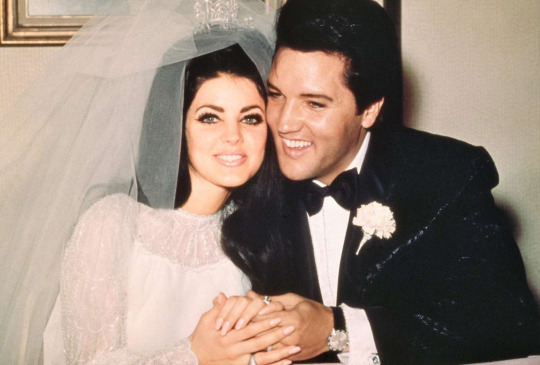
Elvis Presley (Purvashada Sun) met his wife Priscilla Presley when she was 14 and he was 24. He was hell-bent on "preserving her purity" and they had a very "chaste relationship" after she was married and had a baby however he did not want to have sex with her anymore because she was a mother.

In the 2002 movie Spider, Ralph Fiennes played a man who struggled with the Madonna-Whore complex. He has Mercury in Purvashada as his amatyakaraka.
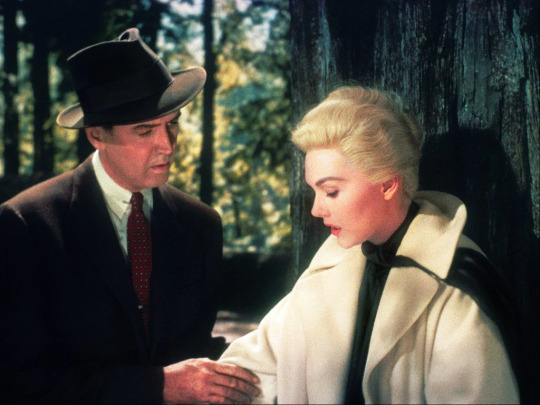
the movie Vertigo (1958) has this complex forming a major plotline. it stars James Stewart (Ketu in Purvashada) and Kim Novak (Mars in Purvaphalguni atmakaraka and Ketu in Purvaphalguni) as the lead actors.
The novel Portrait of the Artist As a Young Man features a protagonist who suffers from this complex and its the primary plot of the novel as well. Its written by James Joyce who is Purvashada Rising.
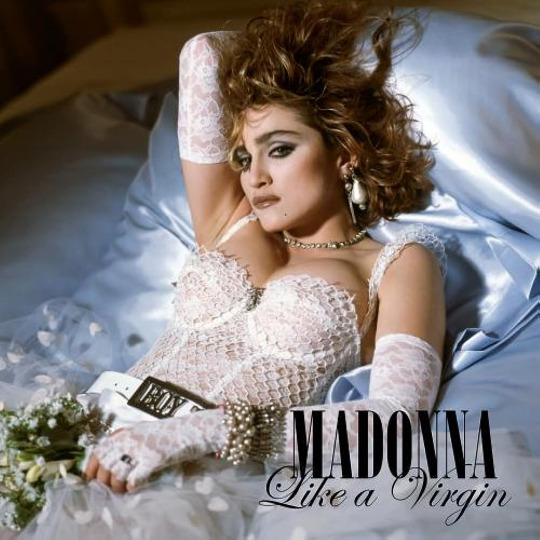
Madonna (Purvaphalguni Moon) often toyed around with the Madonna-Whore complex early on in her career and even has a song called Like A Virgin, the lyrics go like this:
"Like a virgin
Touched for the very first time
Like a virgin
When your heart beats next to mine
Gonna give you all my love, boy
My fear is fading fast
Been saving it all for you 'cause only love can last
You're so fine and you're mine
Make me strong, yeah you make me bold, oh, your love thawed out
Yeah, your love thawed out what was scared and cold."
Since Purvaphalguni is symbolised by the marital bed, and the consummation of the marriage was always associated with "losing innocence and virginity" and how sexual experience is linked with "knowing" and maturing from child to adult.

Black Swan, starring Natalie Portman (Purvaphalguni Moon) and Mila Kunis (Purvaphalguni Mercury & Venus) is a sexually charged movie that explores this dichotomy very well. Nina is a good little girl whereas Lily is highly sexual and wild.
A major theme of this movie is merging these two opposing forces. For good girl Nina to embrace her dark, wild "Black Swan" side. (spoiler alert!!) obviously in this movie, Lily's character is said to be an extension of Nina and not a real person which drives home this point even further.
Losing innocence and corruption/being corrupted are major themes in Purvaphalguni nakshatra and this is not just sexual. An ordinary person losing all sense of morality and submitting to utter debauchery and depravation is a common trope found in the works of many Purvaphalguni natives.

Take the movie, Taxi Driver, for example, it was written by Paul Schrader who has Bharani Moon, Purvaphalguni Venus & Mars
This movie revolves around Travis (the titular Taxi Driver) who is experiencing an extreme existential crisis and is deeply troubled by the prostitution he witnesses around the city; he is unsettled by the moral bankruptness and urban decay around him. He sets out to rescue a child prostitute and the movie has major elements of sex and violence.
This movie is a good example of Bharani's restrained Venusian expression meeting with Purvaphalguni's excess.
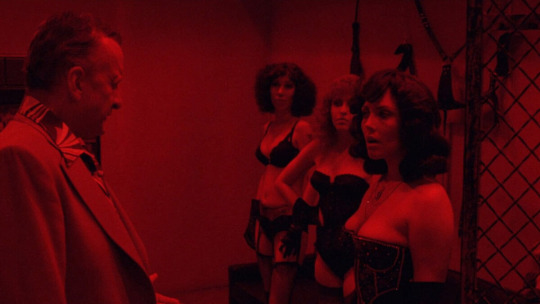
Hardcore (1979) directed by Paul Schrader (honestly all of the movies he's written and directed are LOADED with Venusian tropes, themes and motifs) is about a father who goes looking for his daughter who went on a church trip to Cali and ended up working as a porn star.
Like I've mentioned before, the dichotomy between innocence and corruption, divine and human, Madonna and Whore are core themes in the works of these natives. Like Taxi Driver, the protagonist has to descend into hell in order to save the person who is lost. The contrast between "polite society" or the prim & proper "morally upright" side of society versus the depraved, sleazy, immoral underworld is depicted in a very stark and raw manner.
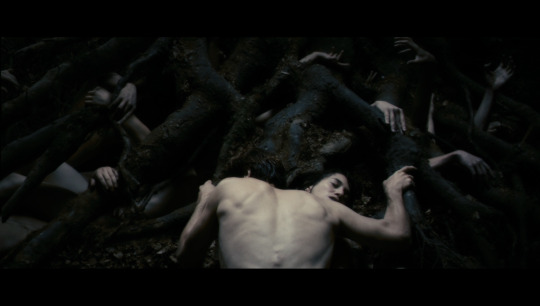
Antichrist (2009) directed by Lars Von Trier (Bharani Sun, Purvashada Moon) and starring Willem Dafoe (Purvaphalguni Moon, Purvashada Rising) is another movie that explores Venus at its most chaotic, unrefined and truthful. Its about a grieving couple who lost their son and go to a cabin in the woods to cope but of course, crazy shit starts happening and is rife with sadomasochistic elements.
Purvaphalguni is the height of Venus, located in the sign of Leo which is ruled by the Sun; here a native loses all sense of ego or pride and gives in completely to their pleasures and desires. Its a very hedonistic nakshatra. Given that its aim is Kama and is a Manushya gana nakshatra, it points to how a native is willing to do anything to attain what he desires; there is no sense of "right" or "wrong" here because Venus is a planet of indulgence.
In Bharani, presided by Lord Yama, the themes were strongly tied to karma, justice, time etc but this is the initiatory stage of Venus, where Venus acts with restraint. In Purvaphalguni, Venus is at its most expansive and wild. Bharani's yoni animal is an elephant; are elephants known for being very sexual? no. they are known for how they protect their herd and how nurturing they are of their young ones. Compare this to the rat (Purvphalguni's yoni animal). Rats have millions of kids and don't stick around to care for them particularly. Since they procreate at such a fast pace, it's every rat for himself. they are associated with filth and dirt.
Its very common for Purvaphalguni men to be involved in sadomasochistic sexual activities; in fact, two of the most famous writers to address these themes, Georges Bataille and Marquis de Sade both have Purvaphalguni Sun & Moon respectively.
“Life has always taken place in a tumult without apparent cohesion, but it only finds its grandeur and its reality in ecstasy and in ecstatic love.”― Georges Bataille (Purvaphalguni Sun)
"Lust is to the other passions what the nervous fluid is to life; it supports them all, lends strength to them all ambition, cruelty, avarice, revenge, are all founded on lust.”― Marquis de Sade(Purvaphalguni Moon with Ketu in Purvashada)
As such, many Purvaphalguni men have been involved in some type of sex scandal at least once in their career.
Nabokov who wrote Lolita had Purvaphalguni Moon and its a book about a old man who falls in love with a child. Like I said previously Purvaphalguni/Venusian men in general tend to have a virgin kink/a thing for innocence and corrupting someone and derive a sense of satisfaction from it.

in the 90s, Hugh Grant (Purvaphalguni Sun) was caught with a prostitute while he was in a long term relationship with Liz Hurley.

Freddie Mercury (Purvaphalguni Sun & Rising) was known for his wild and freaky love life, he openly spoke about his "enormous sex drive", he once celebrated his birthday with a 5 day orgy💀💀

Namjoon (Purvaphalguni Sun) received flak for recommending the book Almost Transparent Blue which featured graphic sexuality and violence including threesomes and rough sex. In his early career, he also received flak for his sexually suggestive songs like "Expensive Girl", "Trouble" and "Joke".
I don't want to go into this because I don't think there can be astrological evidence of someone being an abuser (i.e anyone could be any abuser regardless of their placements) but many Purvaphalguni men have had sexual harassment charges pressed against them.
“One must do violence to the object of one's desire; when it surrenders, the pleasure is greater.”― Marquis De Sade (Purvaphalguni Moon with Ketu in Purvashada)
This nak is the height of Venusian indulgence and as every peak is followed by a valley, Venus after ascending through the aims of Artha and Kama, now finds itself in the concluding Venus nakshatra of Purvashada. The aim of this nak is Moksha. When all else is satisfied, the only thing left to do is seek salvation.
Purvashada's yoni animal is a monkey and Purvashada belongs to the Brahmin caste. It is a Manushya gana nakshatra.
It is symbolised by “a fan/winnowing machine which separates grains from the husk”. It occupies the sign of Sagittarius and thus its sign lord is Jupiter.
The deity of Purvashada is 'Apah', Goddess of Water/Ocean.
In the final Venus nakshatra, the themes of refinement and purification are at their height. There is a relentless desire for expansion and the combined energies of Jupiter & Venus together can make a native simultaneously expansive but still constricted at the same time. Purification is a major theme in this nak. Bharani was concerned with birth and creation, Purvaphalguni with the sexual act in itself but in Purvashada, the Venusian focus shifts beyond either of the two.
Although Magha is most commonly associated with the "Goth" aesthetic, I would say even Purvashada natives have a tendency to lean towards a darker, macabre aesthetic.

Ozzy Osbourne (Purvashada Moon) was lead vocalist of the heavy metal band Black Sabbath and called himself "Prince of Darkness".

Johnny Depp (Purvashada Moon) stars as Edward Scissorhands in the movie of the same name. The movie revolves around an artificial humanoid creature who tries and fails to adjust to normal society despite the efforts of those around him. He falls in love with a woman he cannot be with. This is a common trope in the works of many Purvashada natives.
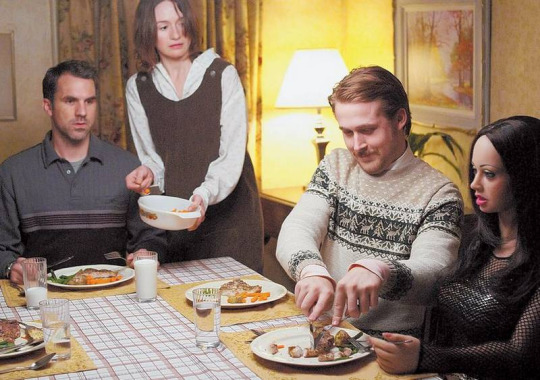
Lars & the Real Girl (2007) stars Ryan Gosling (Purvashada Moon) as a socially awkward man who begins to have a relationship with a lifelike doll believing her to be real. His family tries really hard to help him and ultimately (in a very Purvashada esque ending; because of Purvashada's connection to water) he believes that the doll is dying and mourns for her while submerged in water.

Charles Addams who created The Addams Family had Purvashada Sun (he was also Magha Moon), Morticia Addams was played by Carolyn Jones who was Bharani Sun & Moon, in the 90s adaptations she was played by Anjelica Huston who had Purvaphalguni Moon & Ketu

in the movie City of Angels starring Nicholas Cage (Purvashada Sun) the theme of a human and non-human being uniting is once again repeated, this time, Cage plays an angel who falls in love with a mortal woman. (spoiler alert!!) the movie ends with Cage choosing to be a mortal but his human lover passing away tragically. In true blue Purvashada fashion, the movie ends with Cage near the ocean, accepting his grief and new life as a mortal being.

in Francois Truffaut (Purvashada Rising) Jules et Jim, we see the tale of two men who both love the same woman, Catherine. The story repeats the same trope of how neither man gets to truly be with her (true union being impossible is a common Purvashada trope) and the movie ends with her driving Jim and herself into a river while Jules watches on. (death in the water or mourning someone in the water etc seems to be a common motif in the works of these natives)
“Love (understood as the desire of good for another) is in fact so unnatural a phenomenon that it can scarcely repeat itself; the soul being unable to become virgin again and not having energy enough to cast itself out again into the ocean of another soul.”― James Joyce (Purvashada Rising)
“The best people possess a feeling for beauty, the courage to take risks, the discipline to tell the truth, the capacity for sacrifice. Ironically, their virtues make them vulnerable; they are often wounded, sometimes destroyed.”― Ernest Hemingway (Purvashada Moon, Purvaphalguni Rising)
Hemingway's most famous work is titled The Old Man & the Sea and its set almost entirely on the water/the beach.

Christina Ricci who is best known for playing several dark edgy characters is a Purvashada Moon (she's also Magha rising)
I've also noticed that certain Purvashada natives have associations with Satanism 💀💀 or star in films that feature violent, gorey rituals etc

Rosemary's Baby stars Mia Farrow (Purvashada Moon) and Satanism is a major part of the movie's plot 💀

Zeena Schrek (Purvashada Moon) is the daughter of the founder of the Church of Satan and was the first baby to undergo a Satanic baptism. She's probably best known for conspiracy theories stating Taylor Swift is her clone lmao 💀😭

While Jennifer's Body's main story can be considered an Ashlesha themed one, there are significant allusions to the occult, virgin sacrifice and demonic possession which makes me believe it can be attributed to Megan Fox's Purvashada Rising

in the movie Satanic Panic (2019), Rebecca Romijin (Purvashada Rising) stars as the leader of a satanic cult.

Jane Levy (Purvashada Sun) starred as the protagonist in the 2013 film Evil Dead that features a lot of demons and demonic possession.

Nina Dobrev (Purvashada Sun) is best known for playing Elena on the show The Vampire Diaries. while i know demons and vampires are not the same, you've got to admit they share a lot of similarities xD
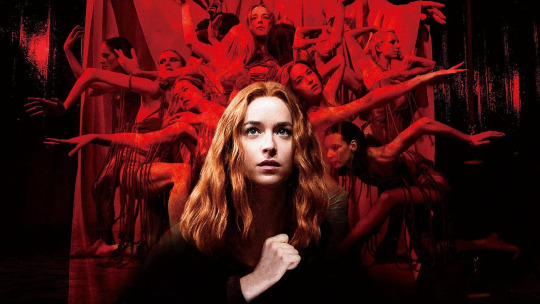
Dakota Johnson (Purvashada Rising) stars in Suspiria which is about a young woman who accidentally finds herself in a cult/witches' coven.
Some very well known people who could be called evil personified are also Purvashada natives, such as Hitler and Harvey Weinstein (Purvashada Moon)
Purvashada natives love to play the devil's advocate, the quality we most associate with a monkey (this nak's Yoni animal) is its playfulness. Purvashada natives do things simply for the heck of it/thrill of it. There is no sense of purpose or direction to which their Venusian qualities are directed. Thus it represents the dark side of Venus. When all other desires are fulfilled and the only thing left is to seek Moksha, the nakshatra tends to exhibit the Trickster archetype.

the 2002 movie May, stars Angela Bettis (Purvashada stellium; sun, mercury, jupiter and rahu) and depicts the cruel and sinister side of Venus very well (trigger warning; this movie is VERY gore-y), its about a woman who ritually murders several people who she did not feel loved by (to put it simply).
While Bharani being the initiatory Venus nak is Venus at its most ethical, all sense of "right and wrong" evaporates into thin air as the Venusian journey progresses. In Purvaphalguni, this manifests as a desire for sex itself but in Purvashada, the native is dissatisfied with mere bodily union, it seeks something bigger. This theme of union being impossible/not satisfying can be seen in the works of many Purvashada natives. The desire to delve into the occult arises out of a desire to transcend ordinariness, find something that addresses the darkness and uncover the truth within it.
The Venusian journey passes through the sign lords of Mars, Sun & Jupiter; beginning as a soldier, working out of a sense of duty, reaching its height in the individualistic Sun, seeking pleasure merely for one's own sake and finally concluding itself in the expansive Jupiter where things get unusual. Venus is a complicated planet full of contradictions and combining its energy with that of Jupiter which expands beyond control means the darkness of Venus makes itself seen in ways we don't quite see in the same way in the other naks.
The tattvas of these naks are earth, water and air respectively. It originates in a very grounded fashion, full of practical concerns, then dissolves itself entirely in the formless water before becoming the element that's hardest to narrow down; air.
Bharani with Aries, Purvaphalguni with Leo and Purvashada with Sagittarius and all these signs are traditionally perceived as masculine and the Fire element in general is understood as masculine. The opposite of fire is water, which is feminine (water being related to the Moon, which is a yin planet) whereas fire is related to the Sun which is a yang planet.
it is the combination of masculine with feminine that heightens the effect of the other. a highly masculine man or a highly feminine woman have integrated the opposite energy within them fully; they are internally almost androgynous . they dont lack the influence of the other
in Bharani, we have the womb and creation, in Purvaphalguni we have the bed, in Purvashada, we have the winnowing basket, separating the husk from the grain, depicting the different functions of Venus; as source, hedon, and order.
#sidereal astrology#astrology notes#vedic astro notes#vedic astrology#nakshatras#astrology#astrology observations#astroblr#astro notes#astro observations#venus#bharani#purvaphalguni#purvashada
327 notes
·
View notes
Text
OKAY
I think we need to discuss something that I’ve literally never heard any other practitioners talk about but I think it’ll immediately clear up A LOT of confusion! This is obviously my own upg so take it with as much validity as you please.
When doing any kind of work with any kind of deity, you really need to understand the concepts of archetypes and syncretism.
Religion, faith, and mythology, it’s all a big mess. Our clumsy archaic human language and our tendency to destroy and distort information means that the ancient world is really, to our modern understanding, A LOT (and I mean a LOT) of hypothesizing.
We often use the same words to describe different concepts, mix up names, combine names, and misunderstand each other. Such is the nature of humanity.
Theology is always fluid. Different entities have different cultural associations, some major entities or characters are even shared among multiple groups of people. Syncretism means that groups of people develop their ideas with the influence of other groups of people, though shifted to make sense for their personal experience.
My favourite thing in the world is when different religions share stories- viewing history from totally different perspectives- Retelling the same events through the scope of their theology.
This is why we have archetypes. There are many goddesses of love and sex that are associated with the planet that is commonly known as Venus. Why these archetypes emerge in the way they do? That’s up for you to debate with yourself.
The question of whether Aphrodite is Astarte or Ishtar or Lucifer or Helel or Eosphoros or Hesperus is not a question that can be answered entirely objectively. It can never be proven and it can never be disproven. Because sometimes the answer is yes, sometimes the answer is definitely no, and sometimes it’s really hard to tell.
The way that we all experience the energy that is “Venus” is going to be different. If she definitely feels like the same energy as Astarte to you, then that could be the case. There’s no objective authority on reality or faith. There is no reason why the findings of 1000 year old magis are more legitimate than yours. Study, learn, experiment.
I like to imagine it similar to colors. We all agree that wavelengths between 620 to 750 nm are red. We have silly little cones in our eyes that work with our brains to turn information into color. But we all understand that there are thousands of shades of red, and some people can’t even see red. Do you see where I’m going? I hope this makes sense.
Because of the way that we interact with reality, there are as many Aphrodite as there are people who believed in Aphrodite- and this is true for every God (at least in my silly little opinion).
There are as many variations in her energy as there are variations of people who follow her.
I try to scope this around what Jophiel told me once. YHWH created him, sometimes. But not at the moment when I was talking to him. When I asked him if Lucifer was the Satan of Christianity he said “sometimes” as well. It depends. It all depends. That’s the beauty of this weird wacky thing that we do.
Anyways,
I don’t know how else to write this but to say some people aren’t compatible with every archetype lol. This is totally okay though, it’s not anyone’s fault! It’s just like … spiritual chemistry. Alchemy? Stay with me!
Nature has laws. If you try to push against these laws you will experience difficulty and suffering. ☹️
Nature creates certain compounds. Stable compounds thrive 🙂 and unstable compounds explode ☹️. Interactions create products and outputs. When two or more elements that are not compatible are introduced they may have a volatile reaction.
I will not claim to know how divinities operate. This is all just my silly billy pondering. But I do know for fact, that at least in my experience, certain entities that share the same address interact with different people in different ways- and some entities will only respond to you under a specific face. Some entities will share faces, and some won’t even respond to you at all.
I’ll use a couple personal examples for reference.
When I first started working with Prince Cerberus, I addressed him using his Goetic name Naberius, as recorded in the Lesser Key of Solomon. I used his sigil and addressed that name.
One of the first things that came through crystal clear was his request to not be called Naberius. He made it very clear to me that he wanted to he called Cerbere or Cerberus, or that I could make up a personal name, but never should I use Naberius. He did not give a reason but he was firm on it.
Now, does this mean that we all can’t use the name Naberius and that we should all blacklist the name? NO! and this doesn’t mean that anyone who works with Naberius is disrespecting Cerberus!!!
For whatever reasons, I don’t know why, my Naberius is Cerberus. I don’t know if Naberius and Cerberus are the same entity or not, I just know that when I think of Naberius I get forwarded to Cerbere. I’m still able to use Naberius’ sigil, but I always get Cerberus.
That might not be true for you. That might not even be logical. That’s just the way that my spirit interacts with that spirit.
I’ve been a long time admirer of Lord Hermes. I approached him and tried desperately to gain his favor, but he refused 💔💔. He made it pretty clear that it wasn’t going to happen through a few ways, and since then he’s repeatedly rejected me…
lol 🥲
I was confused about that for a while, until I started getting hints towards Lord Mercury.
I can’t explain why, I have no idea what the real reason behind this is, but I feel extremely compatible with Mercury, but not with Hermes, like at all. Their energy feels quite separate and different to me. My Mercury isn’t quick like silver, he’s actually quite slow and contemplative.
I was bummed to not be able to establish a “work” relationship with Hermes but it’s probably for the best. Mercury is an excellent teacher.
What I mean to say through all of this rambling is that these things are not concrete. My Astaroth is only Astarte sometimes. Sometimes they feel very similar, sometimes they feel very distinct.
It’s important to remember that the Gods are not one thing, but many things at once. The answers to these questions are all variable. Only you can find the answers for yourself.
If you read this far you’re a real one 🫡
#magick#witchcraft#occultism#pagan#demonology#paganism#witch community#witch aesthetic#witchblr#grimoire#deity witchcraft#deity work#luciferian witch#lucifer devotee#goetia#angelology#eclectic pagan#hellenic paganism#paganblr#hellenic pagan#pagan witch#pagan blog#deity worship
72 notes
·
View notes
Text
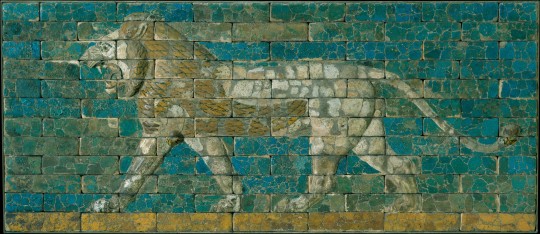
Panel with Striding Lion
Babylonian, ca. 604–562 BCE
The most important street in Babylon was the Processional Way, leading from the inner city through the Ishtar Gate to the Bit Akitu, or "House of the New Year's Festival." The Ishtar Gate, built by Nebuchadnezzar II, was a glazed-brick structure decorated with figures of bulls and dragons, symbols of the weather god Adad and of Marduk. North of the gate the roadway was lined with glazed figures of striding lions. This relief of a lion, the animal associated with Ishtar, goddess of love and war, served to protect the street; its repeated design served as a guide for the ritual processions from the city to the temple.
59 notes
·
View notes
Text
So @follow-the-compass-home made an interesting point about how all the other victors are specific celestial bodies and Scott is just... stars. And that's not fair so here's an idea:
Scott is Venus
Now, he still gets to keep the star imagery because Venus is often known as the Evening/Morning star. It is the third brightest thing in Earth's sky (the other being the Sun and the Moon).
Venus is of course often associated with the goddess Venus, the Roman equivalent of Aphrodite which also fits quite nicely with Scott's character.
Aphrodite is primarily the goddess of love, which can easily translate to Scott's strong loyalty and devotion to his allies. I mean, he literally rejected the boogeyman curse because it would make him harm his allies. He was also probably one of the only people who could pull off the 'love you' task without being suspicious. As he said himself, it was very on brand for him and barely anyone questioned it. This connection can also apply to how Scott plays the social games if not pushed, gathering allies and IOUs left and right. And the theme of love stays relevant as Scott's very first ally in the series was his 'husband'. Also there being a carnivorous flower named after the planet Venus is a cute little nod to the proverbial flower husband.
Aphrodite is also the goddess of beauty and he is the pretty Scott after all. Scott's love for making pretty and aesthetic bases while in a literal death game is another good example of this connection.
One of the biggest aspects of Aphrodite is her rejecting the husband Zeus assigned her, kinda like how Scott rejected Pearl in Double Life.
Limited life also has a lot of symbolism that could touch on the Venus ties. Aphrodite was said to be born out of the sea and Scott was a Mean Gill that season. Also one of Aphrodite's most famous lovers was Ares. Ares' was known by the Romans as.... Mars.
Aphrodite most likely originates from Ishtar/Inanna, an ancient Mespotamian goddess. One of her symbols is an eight pointed star. She is not only the goddess of love, but also of warfare, which fits into Scott being pretty good at PVP. Sometimes she is referred to with the epithet Irnina, which means victory and Scott is one of the Winners.
In Islamic tradition, Venus is associated with a beautiful woman who managed to get into heaven by tricking a pair of angels, but she became trapped there. Kinda like how Scott became the first victor other than Grian, the watcher.
In Turkik mythology, the god Erkliğ Han is associated with Venus. He is responsible for shooting stars which are called fiery arrows. Scott is very good with a bow, after all.
Tldr; make my boy an actual celestial body he desrves it
#i am not fully familiar with all the mythologies so i am very open to corrections!#ok enough about silly gay blockmen back to legend of korra#trafficblr#traffic smp#traffic series#life series#life smp#3rd life#last life#double life smp#limited life#secret life#scott smajor#smajor1995#smajor95#smajor mcyt#dangthatsalongname#scott major#pearlescentmoon#martyn inthelittlewood#martyn littlewood#inthelittlewood#grian#traffic life
123 notes
·
View notes
Text
Pagan Wedding Flowers (and other plants) Cheat Sheet
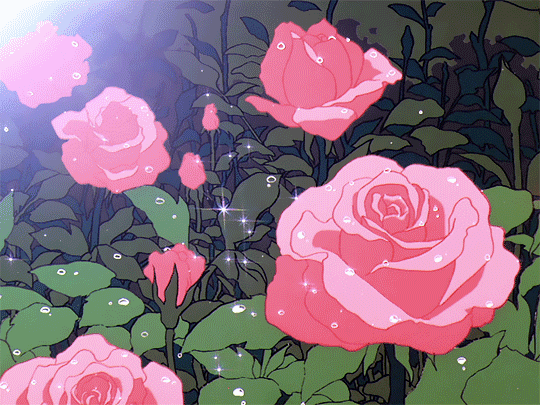
Flowers have been associated with weddings for almost as long as humans have been getting married. In fact, the use of flowers in ritual may actually be older than humans! Neanderthal graves in Iraq suggest that Neanderthals buried their dead with flowers. There are mentions of flowers in our earliest recorded accounts of weddings, such as in Egypt, Greece, and Rome.
Historically, couples would have used whatever flowers were available to them. While some cultures had flowers they preferred for weddings because of their symbolism, couples would have been limited by what grew in their area and by what was in bloom at the time of their ceremony. To be truly as historically accurate as possible, consider using flowers you grew or foraged yourself. Bonus points for native blooms!
For those who aren't into growing or gathering your own wedding flowers, modern florists and greenhouses allow us to choose from a wide range of flowers, many of which aren't native to our homes. This makes it much easier to choose flowers based on their symbolism, history, or cultural meaning.
Historic Wedding Flowers + Plants
Roses have been the flower of choice for Western weddings pretty much forever, and with good reason. The rose is associated with several ancient goddesses of sex, fertility, and/or romance, such as Inanna, Ishtar, Aphrodite, and Venus. (Later, medieval Christians would also associate this flower with the Virgin Mary.) Including the goddess's flowers in a wedding may have been a way of invoking her blessing on the union. Sappho called rose "Queen of the Flowers."
Roses are held in a high regard in pretty much every culture with access to them. They're strongly associated not only with love, but also with beauty, wholeness, blessings, and even spirituality.
Rose was included in wedding celebrations in Ancient Hellos (Greece) and Rome. It is associated with the planet Venus and the water element.
Wheat was also a popular inclusion in weddings in ancient Greece and Rome. Hellenic brides would carry sheaths of wheat or another grain to invoke fertility and good fortune. Wheat was strongly associated with agrarian goddesses like Demeter, Persephone, Ceres, and Proserpina. Carrying wheat may also have been a way of expressing a wish for the marriage to produce many children. Pliny the Elder explicitly says in his Natural History that wheat was included in weddings to honor Ceres.
In modern occult systems, wheat is associated with fertility, the conception of children, and wealth. It is associated with the planet Venus and the element of earth.
Olive branches also featured in Hellenic weddings. Olive was an important crop in the ancient Mediterranean, and olive branches were a symbol of peace and friendship. Olive was also used in the victors' crowns in the Olympic Games. In Athens, the olive tree was a symbol of Athena. It was also carried by worshipers of Apollo when they visited the Oracle at Delphi. Olive was also important to the Romans, who associated it with Mars in his aspect as a protector of peace.
In modern magic traditions, olive is associated with beauty, healing, stamina, wealth, fertility, protection and of course, peace. It is associated with the sun and the fire element.
Orange blossoms were included in Hellenic weddings as a sign of happiness. These strongly scented white flowers also sometimes appeared in Roman weddings. Thousands of years later, Queen Victoria wore a crown of orange blossoms at her wedding, but for her they were a symbol of chastity.
In modern systems, orange is associated with joy, partnership, sweetness, and good luck. It is associated with the sun and the fire element.
Hawthorn appeared in weddings in ancient Rome. Pliny the Elder said that Roman bridal processions included a hawthorn torch dedicated to the goddess Ceres. In Rome, hawthorn was more generally associated with love and good luck.
In Celtic cultures, especially Ireland, hawthorn was believed to be a fairy tree. For this reason, cutting a hawthorn tree or bringing hawthorn branches inside was considered bad luck.
The blooming of hawthorn trees was used to determine the date of Bealtaine, and hawthorn boughs were often decorated with flowers, ribbons, and egg shells to make a May bush, which was placed by the front door for good luck. In Britain, hawthorn wood was used to carve maypoles. Hawthorn flowers may be especially appropriate for a May wedding or handfasting.
In modern occultism, hawthorn is associated with protection, healing (especially healing the heart), romantic love, fertility, granting wishes, and happiness. It is still strongly associated with weddings and marriage. It is associated with the planet Mars and the fire element.
Lotus may have featured in ancient Kemetic (Egyptian) weddings. The lotus was an important symbol in Kemetic religion, and was associated with the sun, rebirth, and the creation of the world. Lotus flowers featured in festivals to honor Hapi, the androgynous god of the Nile. The lotus is used in art to represent Upper Egypt. An Egyptian poem from 1100 BCE connects the lotus to marriage.
Lotus flowers were also popular in ancient Chinese weddings, and they're still used by some Chinese couples today. In Chinese culture, lotus represents purity, honor, and long life.
In modern traditions, lotus is associated with protection, spirituality, and blessings. It is associated with the moon and the water element.
Yellow flowers were used in pre-Christian Ireland for blessings and protection. The exact flower used for these rituals is not specified, so it seems like the color was what mattered. Modern pagans looking to carry on this tradition have lots of yellow flowers to choose from. Some popular choices include yellow roses (see above), yellow amaryllis (associated with creativity, playfulness, and joy), chrysanthemum (associated with long life, optimism, and protection), marigold (associated with happiness, rebirth, and vitality), and/or daffodils (associated with love, fertility, and luck).
Modern Wedding Flowers
We've gone over some of the flowers that were popular in historic pagan weddings, but it's also easy to pagan-ify the flowers that are most popular in modern weddings. Here's a quick rundown of some popular wedding blooms and their neopagan and occult symbolism:
Peony is associated with purification, healing, prosperity, and success. In ancient Rome, peony was believed to be sacred to Mars. It is associated with the sun and the fire element.
Dahlia is associated with mystery, occult wisdom, and transformation. It is associated with the moon and the water element.
Lilac is associated with balance, peace, romance, protection from evil, and attracting friendly spirits. It is associated with Venus and the water element.
Sweet Pea is associated with comfort, charm, and sweetness. It is associated with Venus and the water element.
Hydrangea is associated with healthy boundaries, breaking negative patterns, hex breaking, and protection. It is associated with water and with both the moon and Neptune.
Tulip is associated with beauty, desire, gratitude, love, prosperity, and simplicity. It is associated with Venus and the earth element.
Orchid is associated with beauty, elegance, sexuality, fertility, and romance. It is associated with Venus and the water element.
Lily is associated with spirituality, beauty, harmony, and protection from the evil eye. It is associated with Venus and the water element.
Carnation is associated with beauty, love, rebirth, strength, and healing. Carnations are associated with same-gender love and especially love between men because of Oscar Wilde's fondness for them. They are associated with the sun and the fire element.
Gardenia is associated with love, peace, healing, and spirituality. It is associated with the moon and the water element.
Resources:
"New Neanderthal remains associated with the ‘flower burial’ at Shanidar Cave," Cambridge University Press
"History of Wedding Flowers" by Benna Crawford
The Roman Wedding by Karen K. Hersch
"The Olive in the Ancient Mediterranean" by Mark Cartwright
"The History, Mythology, and Offerings of Hawthorn" by Meghan Pivarnik
Where the Hawthorn Grows by Morgan Daimler
Temple of the Cosmos by Jeremy Naydler
The Magic of Flowers by Tess Whitehurst
The Magic of Trees by Tess Whitehurst (see my disclaimer about Whitehurst's books, but these are some of her better ones)
Cunningham's Encyclopedia of Magical Herbs by Scott Cunningham
#the great handfasting project#handfasting#pagan wedding#wedding magic#queer wedding#pagan#paganism#pagan witch#hellenic polytheism#hellenism#religio romana#cultus deorum#roman polytheism#kemetic paganism#kemetic polytheism#irish paganism#irish pagan#irish folklore#wicca#wiccan#flowers#flower magic#correspondences#love magic#love spell#green witchcraft#green witch#witch#witchblr#witchcraft
504 notes
·
View notes